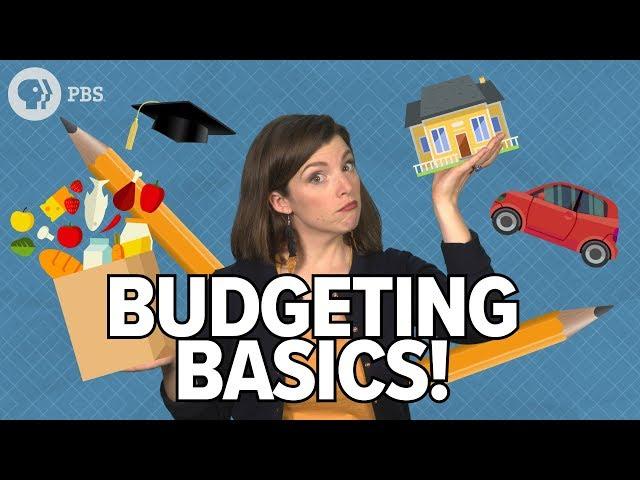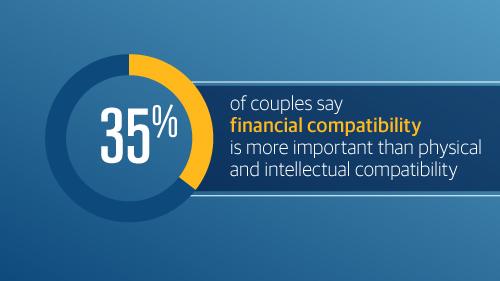Making a career change can feel like you’re trading in your snow boots for a surfboard—you’re ready for an exciting adventure, but you’re also not entirely sure you’ll stay afloat. It’s a thrilling concept, but it comes with its fair share of financial whirlpools. Before you dive headfirst into this new chapter, it’s crucial to learn how to navigate the often-turbulent waters of expenses, income adjustments, and, yes, the inevitable moment when you question if ramen is an appropriate breakfast food. In this article, we’ll arm you with the best practices, hard-earned wisdom, and a sprinkle of humor to help you steer clear of financial rip currents and sail smoothly into your new professional horizon. So, grab your metaphorical life vest as we delve into the numbers behind the dream!
Now There’s a Hole in My Wallet: Understanding Your Financial Starting Point
Starting a new career can feel like a rollercoaster, especially when you’re watching your wallet take a nosedive. Before you panic, let’s break down where you stand financially. Your starting point includes more than just your salary; it factors in savings, debts, and monthly expenses. Here’s the thing: You need to know what you’re working with before you can make a game plan.
- Savings: What’s your emergency fund looking like?
- Debts: Credit cards, student loans, mortgage—oh my!
- Monthly expenses: Rent, utilities, Netflix subscription—don’t forget the essentials!
| Savings | Debts | Monthly Expenses |
|---|---|---|
| $5,000 | $15,000 | $2,500 |
Seeing it all laid out can be a tad overwhelming, but it’s the essential first step. Understanding your financial starting point will help you navigate those job-switching waters with a bit more confidence and a lot less anxiety. So grab a cup of coffee (budgeted, of course) and take a good look at those numbers.

Budgeting Basics: How to Survive on Instant Noodles (and Not Go Broke)
If you’re navigating a career change, budgeting can feel like diving off a cliff into a pool of instant noodles. Fear not! Surviving on a tight budget doesn’t mean kissing gourmet meals goodbye. Instead, it means mastering the art of creative and affordable eats. The key is balancing what you have with what you need to keep you fueled for job applications, interviews, and new opportunities. Here’s a breakdown of how you can make it work:
- Variety is the spice of life: Spice up those noodles with leftover veggies, canned meats, or even an egg.
- Smart shopping: Bulk buy to save money and always be on the lookout for store sales and discounts.
- DIY sauce: Experiment with cheap condiment combinations; soy sauce and hot sauce can work wonders!
To give you an idea, here’s a quick reference table for enhancing your instant noodle game without breaking the bank:
| Ingredient | Cost | DIY Sauce Mix |
|---|---|---|
| Frozen Veggies | $2.00 | Peanut Butter & Soy Sauce |
| Canned Tuna | $1.00 | Mayonnaise & Sriracha |
| Eggs | $1.50 | Garlic Powder & Sesame Oil |
Keep these tips and tricks up your sleeve, and you’ll be well on your way to not just surviving, but thriving on a budget during your career change! And who knows, maybe your next office will have an unlimited supply of instant noodles!

Investment Strategies: Turning Pennies into Pesos (And Other Small Miracles)
Changing careers can feel like deciding to switch from surfing to snowboarding halfway down a mountain. One minute, you’re riding the waves of familiarity and the next, you’re plummeting into a cold, unfamiliar landscape. The key to financial survival during this upheaval is all about smart investment strategies. Think of your money as tiny, enthusiastic penguins ready to conquer new financial terrain. Start with a few well-aimed moves:
- Cut those expenses: Trade your daily lattes for homemade brew and watch your savings account perk up faster than you can say “espresso.”
- Emergency fund: Yes, it’s as essential as a first-aid kit on an expedition. Aim to stash away 3-6 months of living expenses.
- Low-risk investments: Bonds and savings accounts might not be thrilling, but they keep your funds safe during the career change shake-up.
| Strategy | Benefit | Example |
|---|---|---|
| Expense Cutting | Increased savings | Homemade coffee |
| Emergency Fund | Financial cushion | 6 months’ expenses |
| Low-risk Investments | Capital preservation | Bonds |
Now, let’s sprinkle a little magic into our penny-pinching. Think about diversifying your income streams. Maybe you have a knack for freelance writing or selling handmade crafts on Etsy. These small miracles can turn into a steady flow of extra pesos, helping to bridge the income gap during your transition. Also, consider skill development as an investment. Free online courses can significantly boost your new career prospects without draining your finances. Remember, every little bit adds up. So, channel your inner penguin and dive into these strategies to stay afloat – and even thrive – during your career overhaul!

Emergency Fund Essentials: Preparing for When Life Gives You Lemons… and Bank Fees
When considering a career change, having an emergency fund isn’t just a good idea—it’s a lifesaver. Think about it: bills, surprise expenses, and of course, those delightful bank fees. To get your emergency fund ready, start with the basics:
- Save at least three to six months of living expenses
- Open a high-yield savings account
- Avoid dipping into your emergency fund for non-emergencies
| Expense | Monthly Cost | Six-Month Reserve |
|---|---|---|
| Rent/Mortgage | $1,200 | $7,200 |
| Utilities | $300 | $1,800 |
| Groceries | $400 | $2,400 |
Don’t forget to budget for those pesky, unforeseen bank fees. These typically lurk around corners when you least expect them. Make sure to:
- Keep a buffer in your checking account
- Opt into alerts for low balances
- Review your bank statements regularly
Having these essentials in place can prevent a financial citrus disaster when you’re navigating a career change. Keep a little cushion in your finances, and you’ll be ready for whatever life (or your bank) throws at you.
Q&A
Q&A:
Q: ”I’m thinking about a career change, but my finances are tighter than my high school jeans. What’s the first step?”
A: Ah, the timeless struggle of a career shift! Before diving headfirst into a new industry, gather intel—like a financially savvy spy. Assess your savings, budgeting skills, and the potential cost of further education or certification. A solid emergency fund is your secret weapon. Aim for three to six months’ worth of expenses, and remember: ramen noodles can be both nostalgic and budget-friendly in a pinch.
Q: “But what if my dream job means taking a pay cut? How do I cope without selling my kidney on the black market?”
A: Fear not, we advocate for both of your kidneys remaining firmly in place! Adjusting to a pay cut involves some strategic planning. Start by slashing non-essential expenses—streaming services, those daily $6 lattes, and spontaneous Amazon splurges. Create a lean, mean budget and stick to it. Think of it as a fitness plan for your bank account: painful at first, but rewarding in the end.
Q: “Should I consider moving to a cheaper location to ease the financial burden?”
A: Moving is a bold and potentially brilliant strategy! Weigh the pros and cons. Lower living costs can make a significant difference, but remember to factor in the emotional and logistical chaos of moving. Pro tip: avoid selling everything you own on Craigslist and living out of a suitcase to save on moving trucks—that’s only romantic in travel memoirs.
Q: “How about side gigs? Are they really worth the time and effort?”
A: Absolutely! Side gigs are like those trusty multi-tools—versatile and incredibly handy. Whether it’s freelance writing, dog walking, or selling quirky knitted hats on Etsy, extra income streams help bridge financial gaps. Just ensure your new side hustle doesn’t interfere with your main hustle. Balance is key; unless you’ve mastered cloning, trying to do everything might lead to burnout faster than you can say “overworked.”
Q: ”Is it worth investing in additional education or certifications?”
A: Yes, but be smart about it. Think of educational expenses as investments in your future, not an excuse to rack up debt. Seek out affordable or free online courses, community colleges, or employer-sponsored programs. And keep an eye out for scholarships—free money is the best kind of money! Just avoid the “I’ll-go-back-to-grad-school-because-I’m-confused-about-life” trap. That’s an expensive hobby.
Q: ” What about networking? How do I turn awkward small talk into job leads without sounding desperate?”
A: Networking can be as daunting as a blind date, but it’s crucial. Start by reconnecting with former colleagues, attending industry events, and joining online professional groups. The key is genuine curiosity and interest—think of yourself as an enthusiastic detective, not a salesperson. And always follow up with a thank-you note. Politeness is never out of style, even if it’s sprinkled with a touch of desperation.
Q: “Any last tips for tackling the anxieties that come with a financial overhaul during a career change?”
A: Absolutely! Treat this journey like an epic road trip. There will be detours, pit stops, and the occasional gas station snack (budget permitting). Stay flexible, keep your sense of humor, and remember that financial stability is a marathon, not a sprint. Celebrate small victories and keep your eye on the prize: a fulfilling career where you thrive both professionally and financially. And maybe, just maybe, you’ll fit back into those high school jeans—metaphorically speaking, of course!
With these tips, you’ll be navigating the choppy seas of career change like a seasoned captain. Anchors aweigh! 🚢💼
In Retrospect
navigating the choppy waters of a career change is no small feat—it’s akin to juggling flaming swords while riding a unicycle on a tightrope. But fear not! With some strategic financial planning, savvy saving techniques, and perhaps a well-timed sale on ramen noodles, you’ll survive this thrilling circus act and come out the other side stronger and—dare we say it—more financially astute.
Remember, Rome wasn’t built in a day, and neither is a new career. By staying informed, seeking out solid advice, and keeping a healthy sense of humor about the inevitable bumps along the way, you’ll be well-equipped to turn these financial challenges into stepping stones. So, go forth and conquer that new career path with confidence—and maybe keep a few juggling balls handy, just in case.


